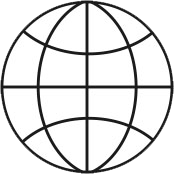
ap

ap
An International Peer Reviewed Research Journal
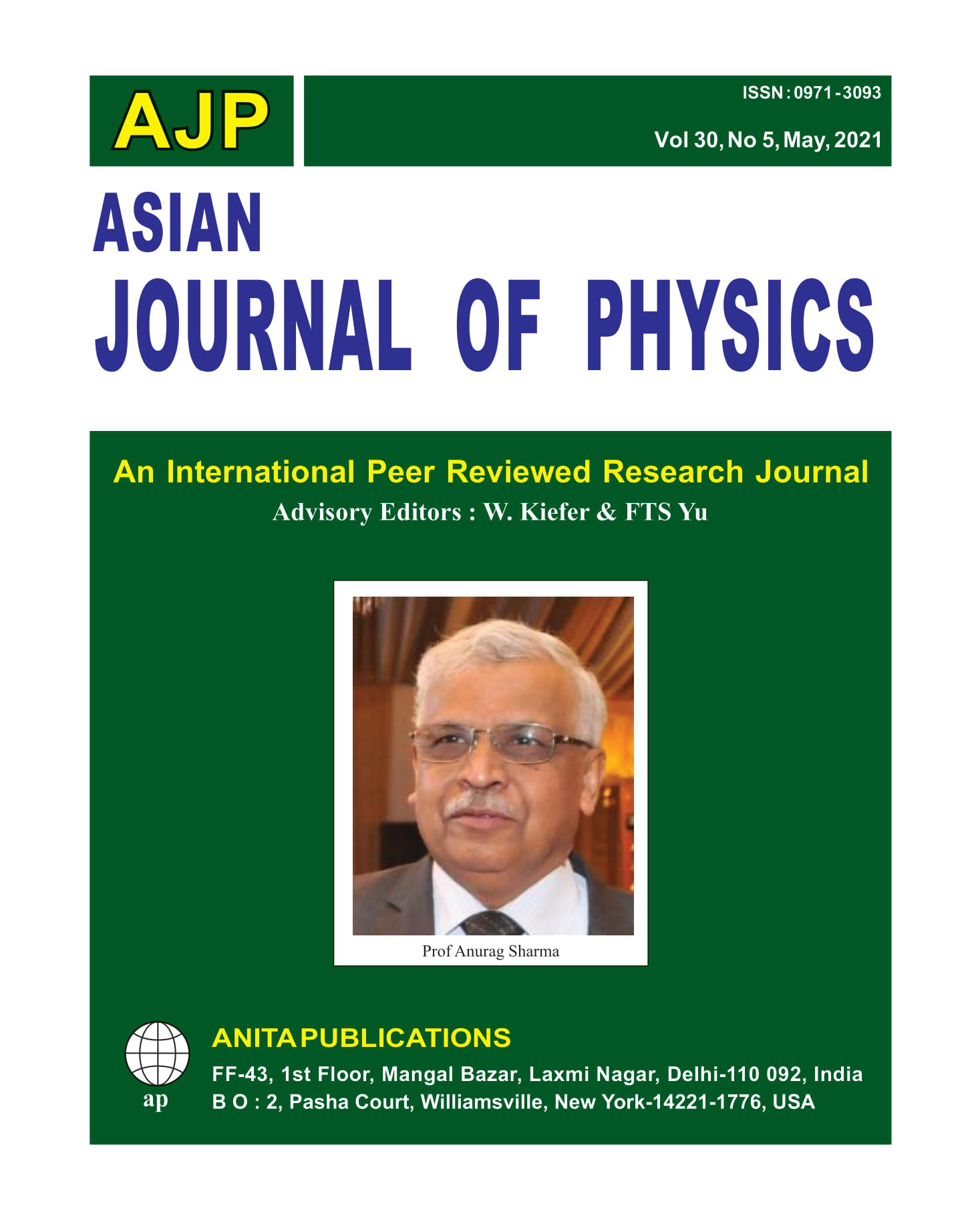
AJP
SSN : 0971 - 3093
Vol 30, No 5, May, 2021
Asian
Journal of
Physics
_________________________________________________________________________________________________________________________________
Volume 30 No 5 May 2021
_________________________________________________________________________________________________________________________________
A Special Issue Dedicated
to
Prof Anurag Sharma
Guest Edited By : S N Tripathi and V K
Rastogi
Anita
Publications
FF-43, 1st Floor, Mangal
Bazar, Laxmi Nagar, Delhi-110 092,
India
___________________________________________________________________________________________________________________________________
About Professor Anurag Sharma
Born on
May 7, 1955 at Bareilly (UP), Prof. Anurag Sharma did his post
graduate education at IIT Delhi obtaining Ph.D. in 1979. He joined,
in 1980, the Physics Department, IIT Delhi, as a faculty member. He
is currently a J. C. Bose Fellow and the ‘Class of 66’ Chair
Professor.
Professor Sharma has made several significant contributions
in the area of modelling and analysis of optical waveguides and
imaging devices and components developing several new techniques
for propagation of optical rays and waves. He is known for his
research in guided wave optics and is credited with the development
of analytical and numerical methods for dielectric optical wave
guides, single-mode fibers, Graded-Index (GRIN) devices and optical
imaging system. He developed a protocol for tracing GRIN media for
use in imaging systems which improved the computational efficiency
of ray tracing by at least two orders of magnitude.
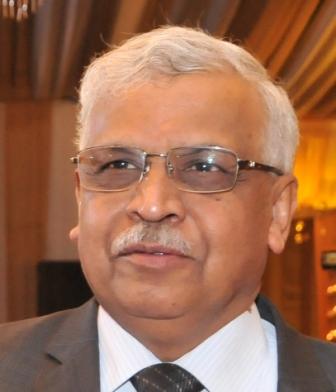
The
method was immediately adopted by the international community and
it continues to be part of all commercial optical design softwares
even today. He has also developed an entirely new concept in
wide-angle beam propagation has become important in view of
continuous effort in miniaturization of devices. He has also
developed the use of the variational method for single mode
waveguides and optical fibers. Over the four decades he has
analyzed various waveguides which came up due to developments in
technology. He has published over 110 papers in journals and over
200 papers in conference. He has coauthored a book and has edited
another. He was involved in several international collaborations
with UK, Japan, Norway, Germany and France.
For his outstanding contributions, he has been honoured with
many awards including the Shanti Swarup Bhatnagar Prize for
Engineering Sciences (1998), Young Scientist Medal (1986) and the
A.K. Bose Prize (1991) by the INSA, M.N. Saha Award (1999) of the
UGC, Homi Bhabha Fellowship (1990-92), M.N. Saha Lecture Award
(2017) by the NASI and the Om Prakash Bhasin Award (2018). He is a
Fellow of the INSA (2004), the NASI (1998), the IASc (2002), the
INAE (2009), the IETE (1991) and the OSA-the Optical Society (USA,
2004). He is a Distinguished Fellow of the Optical Society of
India. He has also been an Alexander von Humboldt Fellow (1982-83)
at Karlsruhe University (Germany) and an Associate (1988-1999) and
a Senior Associate (2001-2006) of the Abdus Salam International
Centre for Theoretical Physics, Trieste (Italy).
Professor Sharma has contributed to the cause of optics and
photonics by organizing several workshops, seminars and
conferences. Just to mention a few: he was the Secretary of
Photonics-1998, co-chair of Photonics-2008 and Chair of
Photonics-2018 held at IIT Delhi. He also organized the annual
symposium of the OSI in 2011. Recently, he has initiated since 2017
annual workshops on Optics and Photonics: Theory and Computational
Techniques (OPTCT).
He has served IIT Delhi in various capacities. He was the
Dean of Students (2006-2009), the Chairman, Golden Jubilee
Committee (2009-2011), the Dean Academics (2012-2016), the Head,
Physics Department (2016-2019). He also acted as the Dean of
Student for IIT Ropar (2008-2009) and the Professor I/C (2016-17)
and the Dean (2017-2019) for Academics for IIT Jammu. He was a
member of the BoG (2014 and 2016) and the Chief Vigilance Officer
of the Institute (2017-2020).
Professor Sharma has also been involved in various academies,
societies and national bodies. He was a Vice-President of the INSA
(2017-2019), Member Governing Council, INAE (2016-2018) and has
been serving NASI, DST, CSIR and DRDO through membership of various
committees. He was the Vice-President (2008-11) and is currently,
the President (2018-21) of the Optical Society of
India.
Appreciation by Kehar
Singh
It
gives me immense pleasure to write about Professor Anurag Sharma
whom I have known for about 46 years, first as a student and later
as a valued colleague at IIT Delhi.
It was in 1974 that as a student of M Sc.(2nd year Physics)
program, he opted to carry out his project work on holography under
my supervision. At that time, I had only a small laboratory in
which there was a home-made table, a low power He-Ne laser, and
some optical-, and mechanical components to record small holograms.
A cast iron plate was floated on four inflated scooter tubes kept
on a sturdy wooden table. Four legs of the table were placed in
four baskets filled with sand. Such a table dampened sufficiently
the vibrations even though the table was located on the third floor
of the main building having seven floors. Such an arrangement
proved to be quite satisfactory for student experiments for
recording on-axis and small angle (1-2 degrees) off-axis holograms.
For research work, we had to import a commercial table much later.
I was not sure as to why Anurag opted to work on holography for his
project work. Perhaps, during his course work, he developed a
special interest in optics, as also the fact that Denis Gabor won
the Nobel Prize in 1971 for his work on holography, which generated
unprecedented interest in ‘Holography’across the globe,
making it a much sought- after subject. It is an interesting
coincidence, that the laboratory room in which he performed
experiments for his dissertation, was used after a lapse of nearly
four decades to house newly created infrastructure for Ultrafast
Optics. I along with Prof A K Ghatak were invited by Prof. Sharma
to inaugurate the laboratory. Such is the respect he gives to his
teachers.
Anurag kept his interest in optics alive, and joined the
M.Tech.(Applied Optics) program in 1974, during which I taught him
several theory courses and supervised the ‘Optics laboratory’ work
for two semesters. During this period, his interest in optics
deepened further and he completed the program with flying colours.
His unsatiable hunger for knowledge intensified further and he
decided to join for the doctoral program in optical waveguides with
Professor A.K.Ghatak. During his doctoral work, he did some
remarkable research. It would be an exercise in futility to write
about his academic and professional attainments and his career
trajectory, which are outstanding and also given in the
accompanying pages in this issue. Instead, I propose to devote some
space to his management and administrative acumen, and personal
traits to which I have been a witness from close quarters during my
long association with him as a colleague. It is impossible to give
a detailed account of my impressions of him in the textual space
that a write-up of this nature can accommodate. Therefore, only a
few glimpses are listed below:
Whether it was my responsibility as a coordinator of the
M.Tech.(Applied Optics) program for several years or as the
Chairman of the Departmental Research Committee (DRC) or as Head of
department, or as Dean Postgraduate Programs and Research (BPGS),
Prof. Sharma played an important role by giving his sincere,
constructive, and valuable suggestions. During my tenure as Dean
(BPGS), I received his valuable suggestions and support. This was
the period when I had to oversee the designing of new curricula for
various M.Tech. programs of the Institute, because the programs
which were until then of eighteen months duration, were to be
extended to two tears duration as a result of the recommendation by
a national review committee.The process entailed discussion at
various levels; curriculum framing and approval at the department
level, discussion and approval by the BPGS, and finally the
approval by the Senate. In this regard, many pertinent and
remarkable suggestions were put forward by Prof Sharma at all
levels. He was quite firm and had no hesitation in expressing his
frank and forthright views if he differed with my point of view at
any of the fora. He minced no words if he strongly felt that
something was not quite right with the formulation of guidelines
and policies which had a major impact on the department and the
Institute. At the same time, his positive attitude, and skills to
resolve conflicts and suggest acceptable solutions were
unmatched.
Prof Sharma also edited (with Dr Joby Joseph and Prof V K
Rastogi) a book on ‘Perspectives in Modern Optics and Optical
Instrumentation’[1] to commemorate my felicitation on the occasion
of my 60th birthday. The book contains articles contributed by
scientists of repute from India and abroad. An international
symposium was also organized on this occasion, followed by dinner
at the Director’s lodge. The responsibility of organizing the
felicitation function was entrusted to Prof Sharma by the then
Director Prof R S Sirohi who was an admirer of his organizational
capabilities. Prior to this, he had arranged a conference to
celebrate the 60th birthday of Prof. Ghatak,and later edited a book
on ‘Guided Wave Optics’ [2] on the occasion of a farewell function
in honour of Prof Ghatak at the end of his formal association with
IITD. The book is an excellent collection of articles by well-
known experts in the area. When a function was held in the faculty
house to release the book, I was chosen by him to do the
honours.
The year 2011 was the golden jubilee year of IIT Delhi and
year-long celebrations were planned on this occasion. Prof Sharma
was entrusted the responsibility of chairing a committee which was
to work out a detailed plan of activities and their implementation.
Under the able and inspiring guidance of Prof Sharma all the
activities were carried out in a very smooth and systematic manner.
One of the activities was to honour some faculty members
(superannuated and serving) with ‘Golden Jubilee distinguished
awards’, after obtaining recommendations by various departments and
centres, taking into account the distinguished services rendered by
the concerned faculty. An elaborate function was held in the
convocation hall to felicitate the awardees and the function turned
out to be a memorable occasion for the awardees. The participants
were full of praise for the manner in which the ceremony was
conducted by Prof Sharma. Another activity that was carried out
under his able guidance was the printing of large sized posters
depicting the time-line of growth of the Institute by showing
certain landmark events. Faculty winning S S Bhatnagar prize were
shown with their photographs. An exhibition was also arranged, of
books authored/co-authored or edited by the faculty.
Another project that was planned for the year was to initiate
the process of bringing out a book containing the memoirs of the
‘Distinguished golden jubilee awardees’. Prof Sharma wanted me to
take up the responsibility editing such a book by inviting articles
from the awardees, perhaps due to the reason that I had joined the
IITD faculty in 1965 and thus personally knew the senior professors
who were my contemporaries. I gladly accepted the invitation
because I was sure that he would do a great job of getting the book
printed in an elegant style. Unfortunately, due to some unavoidable
reasons, publication of the book [3] got delayed and could come out
only in 2015.
It was at the suggestion and persuasive skills of Prof Sharma
that I wrote an article [4] entitled ‘Optics and Photonics at IIT
Delhi’. It was first printed in the souvenir brought out on the
occasion of an International conference on optics and photonics
held at IITD during the period Dec.3-5, 2011. It traced the history
of development of optics at IITD from 1962 to 2011. and contains
the details of faculty associated with the teaching and research
programs, courses taught, facilities created for experimental
research, doctoral dissertations approved, and honours (various
awards including Bhatnagar award and fellowship of various
academies) won by the faculty over the years. An extended version
of the article was later published in Optics and Photonics
News(India), brought out by the Optical Society of
America.
An activity/program called ‘Honour the Mentor’ was also
initiated as a part of the golden jubilee celebrations, under which
a certain number of students can come together to honour their
mentor. These students are normally the ones who were mentored in
their doctoral and/or M Tech program. Family, and certain number of
friends and relatives are also invited to such a function which was
held in the seminar hall. Large size posters were put at
conspicuous places such as the main entrance to the foyer outside
the venue and near the dais. After a speech by the presider who is
normally the Institute Director, the students made short speeches
giving their impressions about the mentor who was honoured by
presenting him a shawl and a cheque for Rs. Fifty thousand as a
token of gratitude. The mentors were required to give presentations
about their experiences at the Institute. A booklet with photos of
the students and their brief write-ups about the mentor was
released on such occasions. A video recording of the complete
ceremony, and still photographs were later made available to the
mentor and the concerned students. Prof Sharma used to be the
‘Master of Ceremony’ in these functions. The ceremony was followed
by an elaborate dinner in the faculty guest house,to which faculty
of over as the concerned department along with their spouses,
students, and guests were invited. At such a function in my
honour,Prof Sharma while making his remarks about me that Prof
Singh always addresses his colleagues in a formal manner by
affixing Professor or Dr. before the name. He made a plea not to
address him in such a manner and should be addressed only as Anurag
because he had been my student. I agreed spontaneously with his
suggestion. Since that moment I started addressing him as
Anurag.
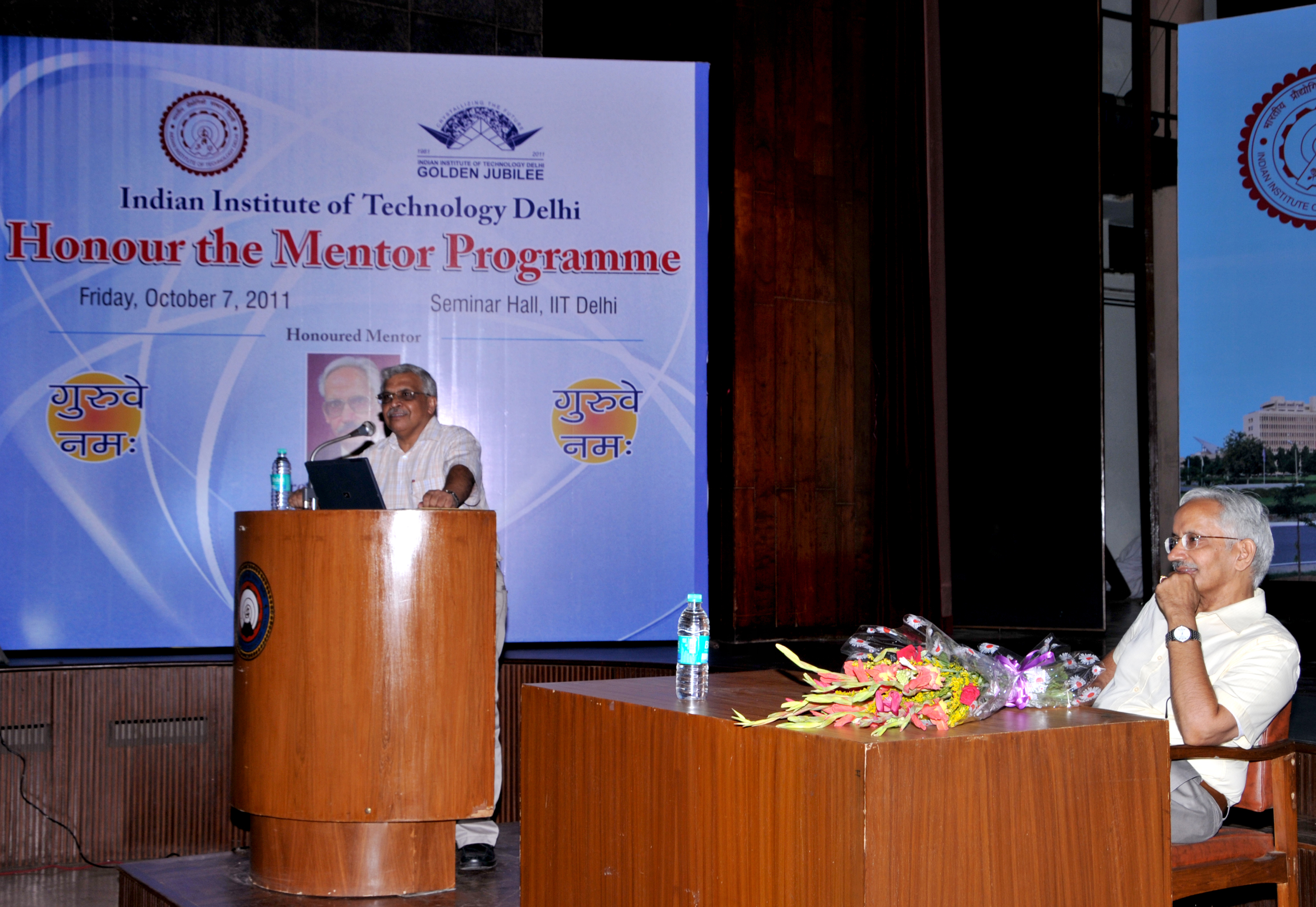
Anurag Sharma (on mike) and Kehar Singh
Anurag has been a moving force behind the series of conference on
‘Photonics’ which have been held at various places in India, once
in two years. These conferences attract not only prominent speakers
from India, but also quite a few reputed speakers from abroad, and
gone a long way in creating awareness of optics and photonics in
India. He also co-edited a collection of selected papers
presented at these conferences as SPIE proceedings. I have the
honour of being an invited speaker at many such conferences and
derived considerable academic benefits by attending these. The most
recent one such conference was arranged by Anurag at IITD in Dec
2018 and was a huge hit with the audience. Many foreign speakers
whom I know personally still write to me of their pleasant memories
of attending and lecturing at the conference. One more recent event
that shows his organizational skills was to celebrate the 80th
birthday of Prof Ghatak. A seminar was held in the physics
department IITD where a special issue of Asian Journal of Physics
dedicated to Prof Ghatak, guest edited by Prof. Bishnu Pal was
released. This was followed by a gala dinner at which glowing
tributes by colleagues, former students, and relatives were paid to
Prof Ghatak, making it a memorable occasion.
After taking over as President of the Optical Society of
India (OSI), Anurag has initiated a slew of measures to invigorate
the OSI. He has been able to find a solution to the long-pending
problem associated with the nomenclature i.e. all members being
designated as Fellows. Two new classes of Fellows namely ‘Senior
Fellow’ and ‘Distinguished Fellow’ have been introduced to solve
the problem and appropriate mechanism has been put in place
for their selections. Writing of short monographs by the members is
also being encouraged by granting financial aid to the authors for
expenditure that may be incurred in the process of such monographs.
Appropriate procedures have been put in place for this
purpose.
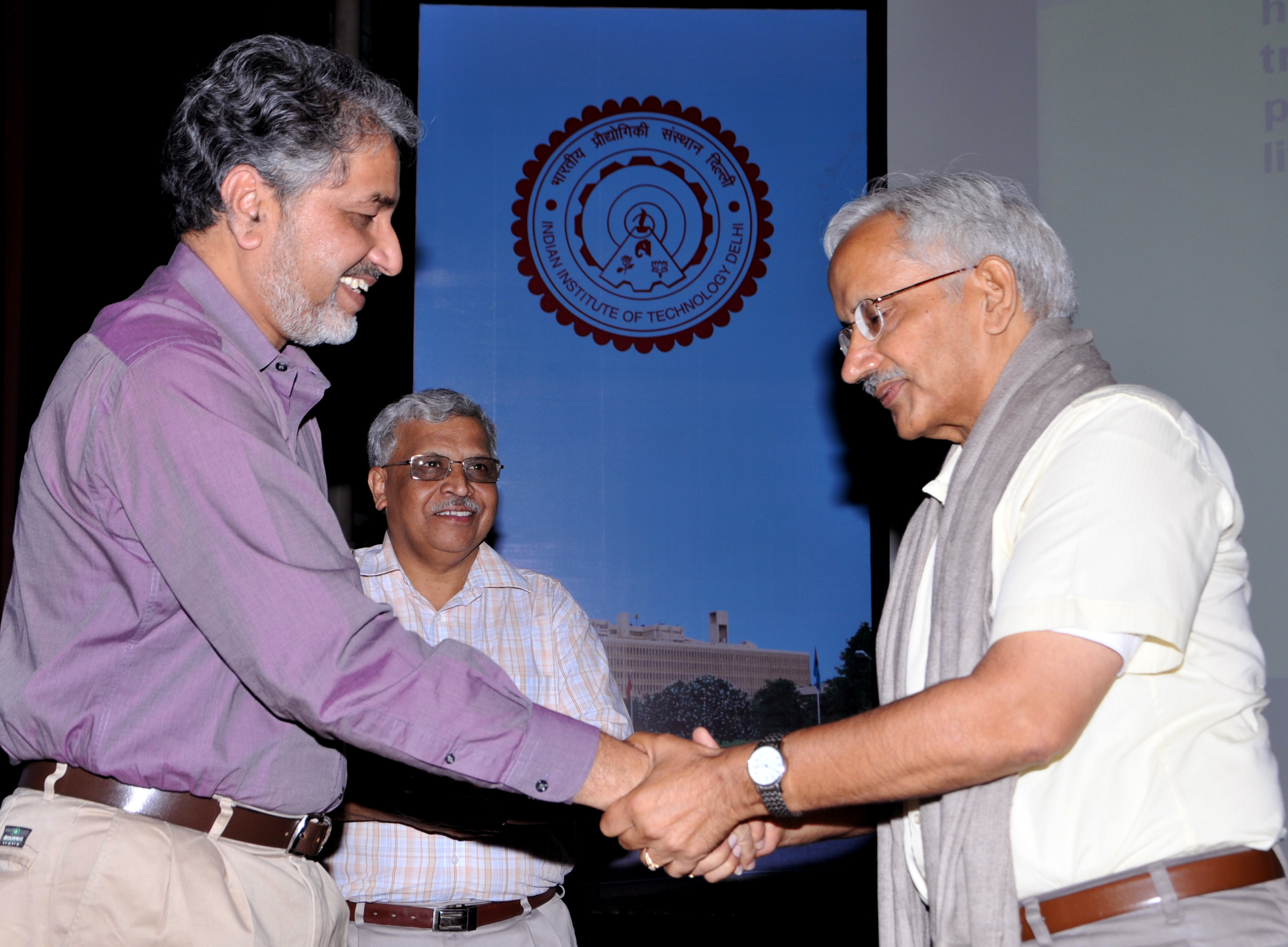

Anurag Sharma (left) and Kehar Singh (right)
I wish
Anurag good health, happiness, and many more years of productive
life in whatever he may undertake. I also wish the same to Enakshi,
his life partner who is also an accomplished teacher and researcher
in her own right. My best wishes also to the younger members of the
family. Finally, I thank Prof V K Rastogi for giving me an
opportunity to write this piece in appreciation of Anurag. Prof
Rastogi is rendering valuable service in the cause of optics and
photonics by bringing out a series of special issues in honour of
imminent scientists who have dedicated their lives in pursuit of
knowledge in their chosen areas.
1. J
Joseph, A Sharma, and V K Rastogi (eds), Perspectives in Modern
Optics and Optical Instrumentation (Anita Publications
New Delhi, 2002)
2. A
Sharma (ed), Guided wave Optics (Anshan City ? 2006 )
3.
Kehar Singh (ed), Those Were the Days, Golden Jubilee Memoirs;
Personal Recollections of Former Faculty Members of IIT
Delhi, (Viva Books Pvt. Ltd. New Delhi, 2015).
4.
Kehar Singh, Optics and Photonics at IIT Delhi: Past and the
Present, in FOP-11;XXXVI OSI Symp. On ‘Frontiers in Optics and
Photonics’ Dec 3-5, 2011, IIT Delhi. See also; Optics and Photonics
News India (Opt Soc. Am.), Vol 1 Issue 1.
Kehar
Singh
Nov.
07, 2020
Appreciation by Bishnu Pal
Professor
Anurag Sharma, FNA has been a very close colleague of mine @ IIT
Delhi. In late 1977 when I returned to IITD from abroad after a
two-year post-doctoral stint at the Norwegian Institute of
Technology at Trondheim, I met him for the first time. He was
pursuing Ph D then with Prof Ghatak as his Adviser. He had worked
on the then hot area of graded refractive index media and in
particular, designs of graded-index lenses. He came out with a new
algorithm for such lens design, which is often referred by
scientists as “Sharma algorithm” in this field as told to me by
Prof Duncan Moore of Institute of Optics @ Rochester once.
There after he moved to more hard-core theory of guided wave optics
and components and has had worked extensively on developing
variational and other techniques for modeling optical waveguides as
well as fibers, some of which like “collocation method” have
received extensive citations also. For last several years he has
been regularly invited to the Waveguide theory workshop held in
Europe before the well-known European Conference on Optical
Communication (ECOC) conference series. With some of his graduate
students he had worked also on optical designs and has taught this
topic to Masters students @ IITD for several years. Besides
his contributions to research, for which he received several
prestigious national awards including the coveted SS Bhatnagar
award of CSIR and earned fellowships from all the major national
academies in India and also the fellowship of OSA The Optical
Society (USA), he has also exhibited his prowess in academic
administration at IIT Delhi with his out of box solutions to
complicated and intricate administrative issues many a times.
Together we had actively collaborated in organizing flagship
international conferences and workshops in the broad area of Fiber
Optics and Photonics several times and I always enjoyed and admired
his approach and also his support and advices when I was Chair of
the Physics department @ IITD. As a person he has been very
positive and helpful to students and faculty in general. I am
glad to know that AJP is bringing out a special issue in his honor
next year and I wish great success of the special issue and him
many more productive years of research.
-
Bishnu Pal, Dean Academics,Mahindra University
Hyderabad
Oct 27,2020
Articles
Asian Journal of Physics Vol. 30 No 5, 2021, 00-00
Coupled mode theory and coupled mode photonic devices: A Review
Enakshi Khular Sharma, Jyoti Prasad Nath and Nikhil Dhingra
Department of Electronic Science, University of Delhi South Campus, New Delhi-110 021, India
Dedicated to Prof Anurag Sharma, FNA for his numerous contributions to Optics and Photonics.
___________________________________________________________________________________________________________________________________
A large number of guided wave photonic devices are based on coupling of guided modes between closely spaced waveguides or between guided modes of the same waveguide. Coupled mode analysis has been the most widely used method to study such coupling in which the interaction leads to transfer of power from one waveguide to the other or between modes of the same waveguide due to index perturbations. We present the coupled mode theory for evanescent field coupling between modes of two waveguides placed close to each other in context to the most versatile coupled mode device, a two-waveguide directional coupler. Its variants can be used to design a number of guided wave coupled photonic devices. We will illustrate by presenting a few such devices like switches and modulators, filters, polarizers and multiplexers for silicon photonic integrated circuits. © Anita Publications. All rights reserved.
Keywords: Coupled mode theory, Coupled mode devices, Switches and Mode division multiplexers.
References
1. Huang W P, Coupled-mode theory for optical waveguides: an overview, J Opt Soc Am A, 11(1994)963-983.
2. Hardy A, W. Streifer W, Coupled Mode Theory for Parallel Waveguides, J Light Technol, 3(1985)1135-1146.
3. Syms R R A, Improved coupled-mode theory for codirectionally and contradirectionally coupled waveguide arrays, J Opt Soc Am A, 8(1991)1062-1069.
4. Vassallo C, About Coupled-Mode Theories for Dielectric Waveguides, J Light Technol, 6(1988)294-303.
5. Haus H A, Huang W, Coupled-mode theory, Proc IEEE, 79(1991)1505-1518.
6. FIMMWAVE/FIMMPROP, Photon Design Ltd, http://www.photond.com
7. Gupta N, Sharma E K, Modified variational analysis of coupled waveguides, J Opt Soc Am A, 10(1993)1549-1552.
8. Kohli N, Srivastava S, Sharma E K, Scalar coupled
mode theory and variational analysis for planar SOI waveguide
arrays: a detailed comparison, Opt Quant
Electron, 48(2016)265; doi.org/10.1007/s11082-016-0540-z.
9. Kohli N, Srivastava S, Sharma E K, Orthogonal
solutions for asymmetric strongly coupled waveguide arrays: an
elegant, analytical approach , J Opt Soc
Am
B, 31(2014)2871-2878.
10. Rumpf R C, Coupled Mode Theory, 21st Century Electromagnetics, Available: https://www.youtube.com/watch?v=pZ_alesCCPo.
11.
Dhingra N, Song J, Ghosh S, Zhou L, Rahman B M A, Design of phase
change Ge2Sb2Te5 based on-off
electro-optic switch, Silicon Photonics XIII,
International Society for Optics and Photonics., vol. 10537, p. 105370Z, Feb. 2018.
12.
Dhingra N, Song J, Saxena G J, Sharma E K, Rahman B M A, Design of
a Compact Low-Loss Phase Shifter Based on Optical Phase Change
Material, IEEE
Photon Technol Lett, 31(2019)1757-1760.
13.
Sital S, Sharma E K, Design Methodology for metal clad polarizer in
SOI waveguides, International workshop on Optical Wave and
Waveguide Theory and
Numerical Modelling (OWTNM)-2015, City University London, UK, 16-18 Apr. 2015.
14. Sital S, Sharma E K, Design Menthology for TE-Pass Polarizer in SOI waveguides, Opt Quant Electron, 48(2016) 369; doi. 10.1007/s11082-016-0636-5.
15.
Nath J P, Dhingra N, Saxena G J, Sharma E K, Compact Mode Division
Multiplexed On-Chip Interconnect based on Evanescently Coupled SOI
Waveguides,
The International Conference on Fiber Optics and Photonics, Indian Institute of Technology Delhi, India, 12-15 Dec. 2018.
16.
Nath J P, Dhingra N, Saxena G J, Sharma E K, Compact Mode Division
(de)Multiplexer Based on Collaterally Coupled SOI Waveguides,
IEEE Photon
Technol Lett,
32(2020)595-598.
___________________________________________________________________________________________________________________________________
Asian Journal of Physics Vol. 30 No 5, 2021, 00-00
Evaluation of confinement losses in micro-structured optical fibers: an alternative approach
D K Sharma1, H Singh2 and S M Tripathi1,2
1Center for Lasers and Photonics, Indian Institute of Technology Kanpur, Kanpur- 208 016, India
2Department of Physics, Indian Institute of Technology Kanpur, Kanpur- 208 016, India
Dedicated to Prof Anurag Sharma, FNA for his numerous contributions to Optics and Photonics
___________________________________________________________________________________________________________________________________
An alternative method is articulated for the prediction of confinement losses in high-index core micro-structured optical fibers (MOFs) with triangular lattice of rounded air-holes. MOF with finite number of air-holes layers is replaced by a doubly clad fiber (DCF) with a depressed index inner-cladding and then, a simple expression in combination to our optical model for confinement losses in the DCF is resuscitated for evaluation. Simulated results are in-line to those as articulated in the literature. © Anita Publications. All rights reserved.
Keywords: Micro-structured optical fiber, Confinement losses, Normalized frequency
References
1. Nyachionjeka K, Tarus H, Langat K, Design of a photonic crystal fiber for optical communications application, S Afr, 9(2020) e00511; doi.org/10.1016
/j.sciaf.2020.e00511.
2. Ahmed K, Morshed M, Design and numerical analysis of
microstructured-core octagonal photonic crystal fiber for sensing
applications, Sen and Biosensing
Res, 7(2016)1-6.
3. Monfared Y E, Javan A R M, Kashania A R M, Confinement loss in hexagonal lattice photonic crystal fibers, Optik, 124(2013)7049-7052.
4. White T P, McPhedran R C, Sterke C M de, Botten L C, Steel M J, Confinement losses in microstructured optical fibers, Opt Lett, 26(2001)1660-1662.
5. Kuhlmey B, Renversez G, Maystre D, Chromatic dispersion and losses of microstructured optical fibers, Appl Opt, 42(2003)634-639.
6. Chau Y F, Numerical investigation of birefringence and
confinement loss formed by rectangular/elliptical/circular air
holes photonic crystal fibers, J Mod Opt,
58(2011)1673-1677.
7. Saitoh K, Koshiba M, Full-vectorial imaginary-distance
beam propagation method based on a finite element scheme:
application to photonic crystal fibers,
IEEE J Quant Electron, 38(2002)927-933.
8. Valentin C, Calvet P, Quiquempois Y, Bouwmans G, Bigot L, Coulombier Q, Douay M, Delplace K, Mussot A, Hugonnot E, Top-hat beam output of a single-
mode microstructured optical fiber: Impact of core index depression, Opt Express, 21(2013)23250-23260.
9. Morshed M, Hassan Md I, Roy T K, Uddin M S, Razzak S M A,
Microstructure core photonic crystal fiber for gas sensing
applications, Appl Opt,
54(2015)8637-8643.
10. Birks T A, Knight J C, Russell P St J, Endlessly single-mode photonic crystal fiber, Opt Lett, 22(1997)961-963.
11. Mortensen N A, Folkenberg J R, Nielsen M D, Hansen K P, Modal cut off and the V parameter in photonic crystal fibers, Opt Lett, 28(2003)1879-1881.
12. Koshiba M, Saitoh K, Applicability of classical optical fiber theories to holey fibers, Opt Lett, 29 (2004)1739-1741.
13.
Sharma D K, Tripathi C M, Implications of theoretical analysis to
explore the functional core dimension in one-rod core
microstructured optical fibers, Opt
Quant Electron, 51(2019)318; doi.org/10.1007/s11082-019-2036-0.
14. Kawakami S, Nishida S, Characteristics of a doubly clad optical fiber with a low-index inner cladding, IEEE J Quant Electron, QE-10(1974)879-887.
15. Marcuse D, Influence of curvature on the losses of doubly clad fibers, Appl Opt, 21(1982)4208-4213.
16.
Cohen L G, Marcuse D, Mammel W L, Radiating leaky-mode losses in
single-mode light guides with depressed-index claddings, IEEE J
Quant Electron,
QE-18(1982)1467-1472.
17. Rastogi V, Chang K S, Holey optical fiber with circularly distributed holes analyzed by the radial effective-index method, Opt Lett, 28(2003)2449-2451.
18. Yan M, Shum P, Antiguiding in microstructured optical fibers, Opt Express, 12(2004)104-116.
19. Koshiba M, Saitoh K, Simple evaluation of confinement losses in holey fibers, Opt Commun, 253(2005)95-98.
___________________________________________________________________________________________________________________________________
© ANITA PUBLICATIONS
All rights reserved
Designed & Maintained by
Manoj
Kumar